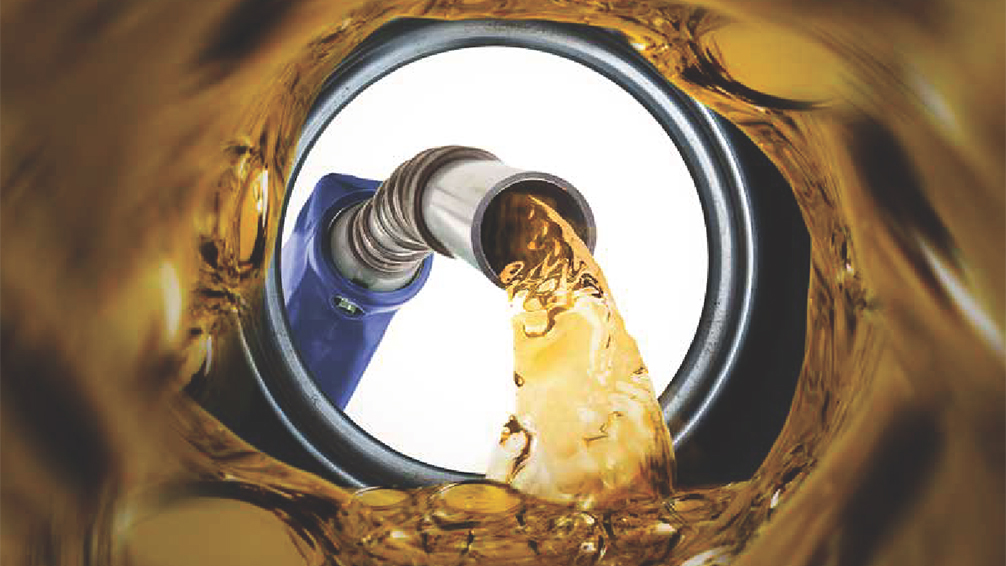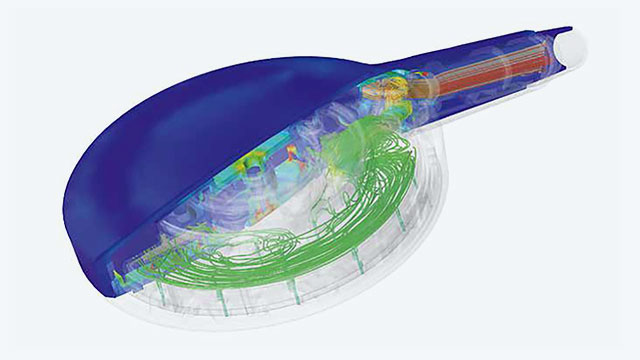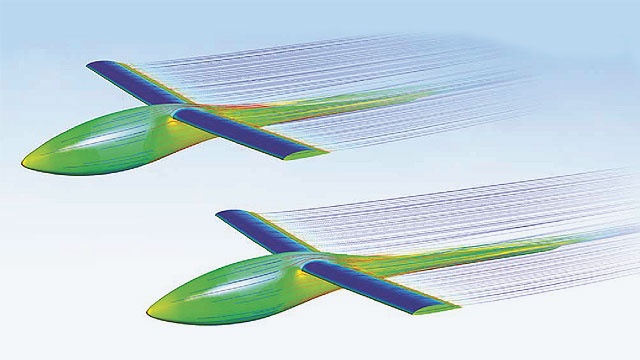
Simulation leads Geberit to design a toilet bowl with asymmetrical geometry
Simulation leads to both a reduction in water consumption and increased hygiene
One of the things Geberit relies on in the sphere of product development is CADFEM software, which it uses to perform flow analyses (CFD), structural-mechanical simulations (FEM), and particle research (DEM), etc. When it comes to performing hydraulics simulations, the company turns to its experts in the Basic Sanitary Technologies department, who devise new ideas in close cooperation with the development department.
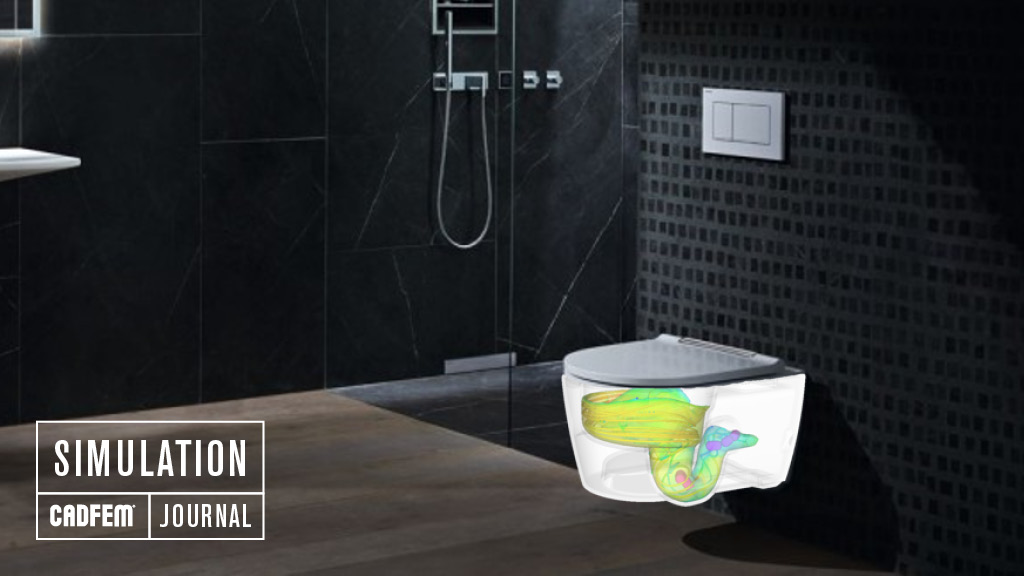
Sustainability has been part of the company’s self-image for decades
Geberit creates quality of life with its innovative product solutions, its comprehensive know-how, and its consistent orientation towards sustainability. Sustainability has been part of Geberit’s self-image for decades. This pays off for the environment, for society, for customers and partners, and for employees and shareholders – a good example being products that save water; indeed, this approach pays off for everyone.
"Using virtual prototypes enables us to obtain reliable answers to the crucial questions relating to the design of a given product, through use of simulation at an early stage," explains Jörn Ikels, Head of Bathroom Systems at Geberit. "This then enables us to select the most fitting solution and also saves us a lot of time and effort on development in that it reduces the number of actual prototypes".
Simulations are used throughout the entire development process at Geberit. It starts at the concept phase, continues on through product development and process engineering, and extends as far as the analysis of products subject to complaint. The degree to which Geberit products are subject to demanding requirements becomes apparent when you consider that, once installed, some of them remain inaccessible for years. It is actually assumed that these products will remain maintenance free for a period of 50 years. One of the things the engineers do to ensure this is the case is to carry out load calculations.
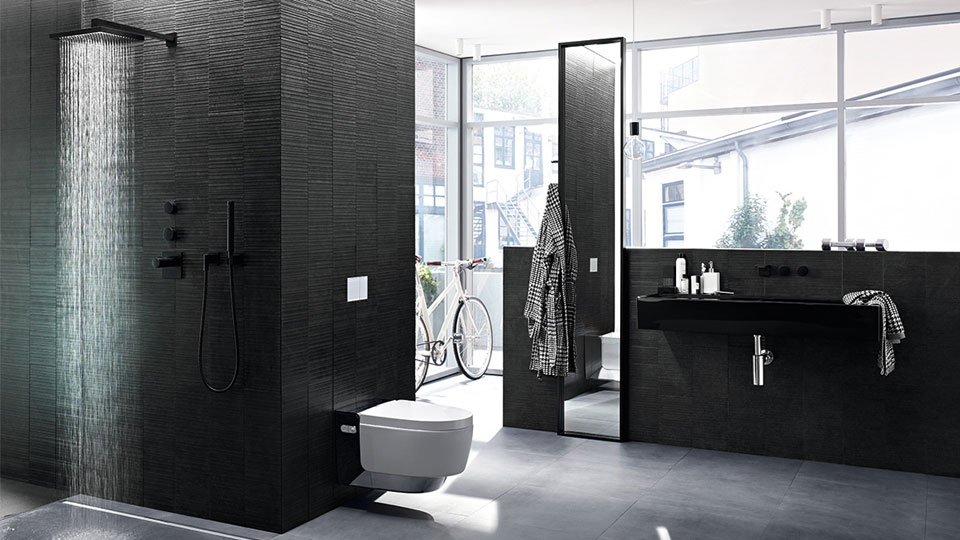
Geberit Group is a global player and is also the European market leader for sanitary products. Geberit has a strong local presence in most European countries, enabling it to offer unique added value both in the field of sanitary technology and in the sphere of bathroom ceramics.
The company’s production capacity comprises 29 production plants, six of which are overseas. The Group headquarters are located in Rapperswil-Jona, in Switzerland. With approximately 12,000 employees in approximately 50 countries, Geberit generated sales of CHF 3.1 billion in 2019.
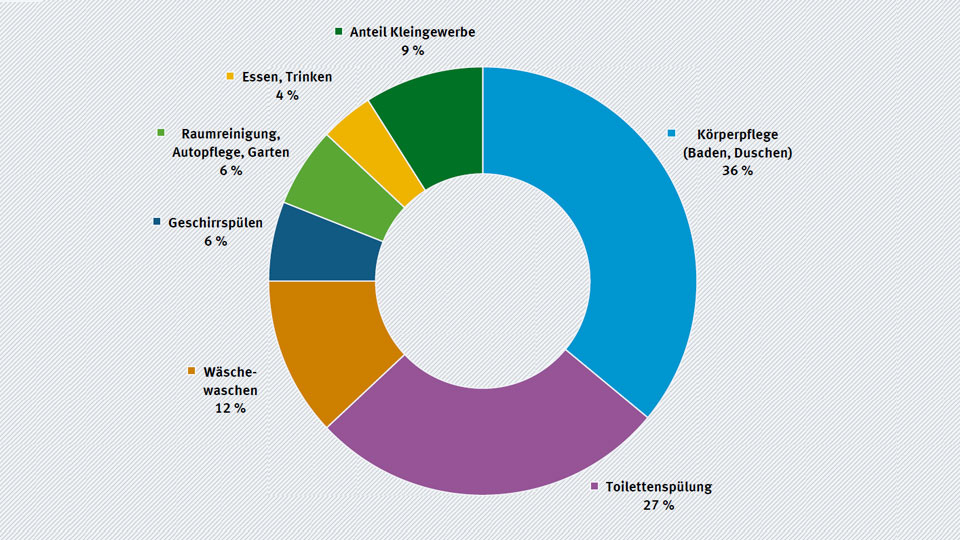
Asymmetrical internal geometry of the toilet bowl
TurboFlush flushing technology constitutes one of the most recent examples of development of an innovative product. At its core lies the asymmetrical internal geometry of the toilet bowl developed and patented by Geberit – something which would never have been possible without the use of CFD software. This method of flushing ensures that the toilet bowl is rinsed in a particularly thorough and quiet fashion while simultaneously minimising water consumption, as a single flush is normally sufficient for thorough cleaning.
"Furthermore, TurboFlush flushing technology does away with the need for any rim," explains Rolf Weiss, one of the CFD experts at Geberit. "This is of great advantage to the customer when it comes to cleaning the toilet bowl. Designing the flow geometry was a great challenge for us as developers in that we had to ensure there wouldn’t be any spill over during the flushing process".
The aim was to develop a toilet geometry that would allow the water filling the cistern to be used as efficiently as possible when flushing the toilet, such that only one flush would be necessary. This would require the water to first enter the toilet bowl without any loss of flow, thereby unleashing its full force. "In order to achieve this, we had to ensure there was nothing that would impede the water", explained Rolf Weiss, "This meant keeping any collisions to an absolute minimum within the inlet area and likewise keeping the water from colliding with the bowl or colliding with itself, of course, in order to avoid turbulence".
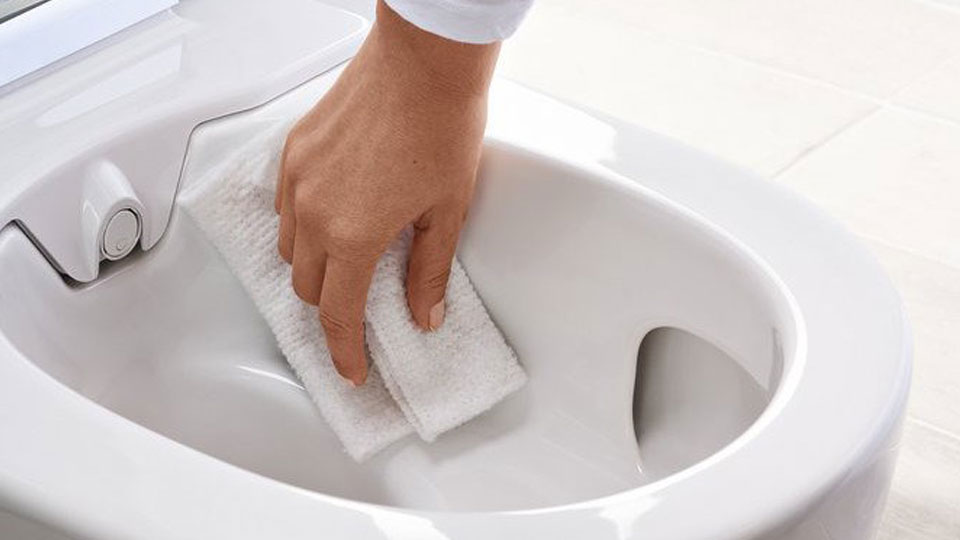
What made for unrivalled rinsing performance
Using a variety of CFD tools enabled the developers at Geberit to perform virtual tests on well over a hundred draft designs before building individual prototypes to validate the development status of any given design. During the course of the simulations and the subsequent prototype tests, ceramics with an asymmetrical design involving a lateral water inlet emerged as the prime candidates, leading to unrivalled rinsing performance.
Twelve litres used to be the norm for a single toilet flush. Progressive development of flushing technology has led to a constant reduction in the amount of water used. Today, dual flushes that use a nominal quantity of 4.5 or 6.0 litres for a full flush or 3.0 litres for a partial flush are the norm. This has already led to considerable savings in the amount of water used.
But estimating the actual reduction in water consumption is difficult. After all, the level of water consumption depends not only on the nominal flush volume, but also on the number of flushes required each time the toilet is used. Everyone knows that after the first flush, particles and/or bits of paper are left behind in the siphon so that you also need to use the toilet brush and then flush again to get rid of everything. TurboFlush rinsing makes these additional rinses superfluous – or at least reduces them to a minimum. The result is a significant reduction in water consumption.
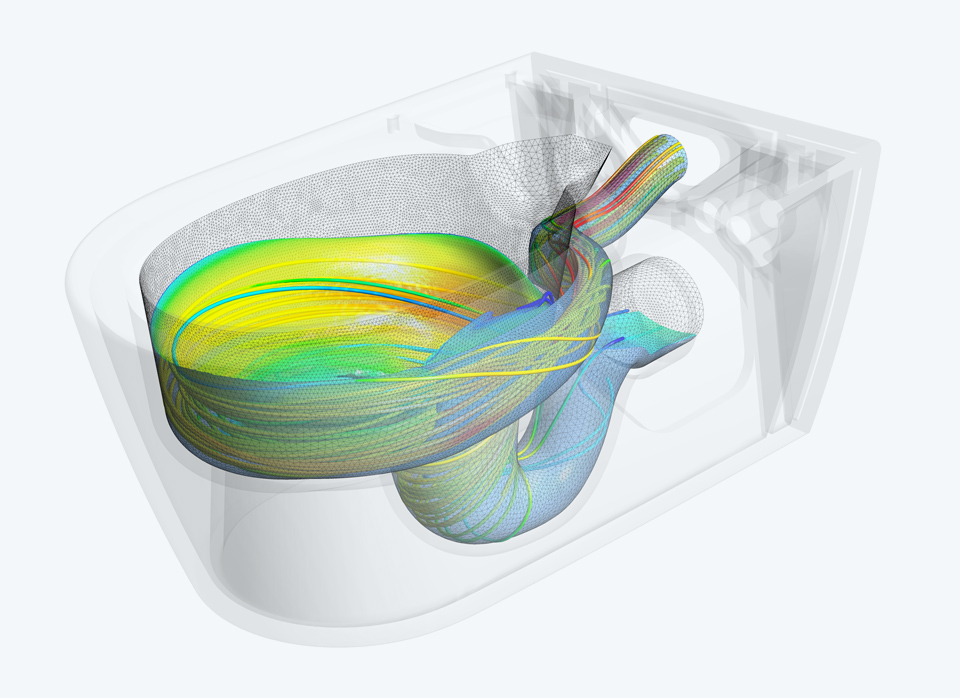
Employing maximum momentum to leave fewer remaining traces
Standard cisterns employing a free outlet have a maximum flow rate of 2.4 litres per second. With some toilet bowls, however, the flow rate may be reduced to less than 1.0 litre per second due to either their geometry or calcification. With the TurboFlush, the newly-incorporated rimless geometry ensures that a flow of around 2.0 litres per second is guided over the surfaces in the ideal fashion – whereas rimmed designs tend to allow the accumulation of dirt and limescale. This leads to significantly fewer traces of unwanted material being left in the bowl and simultaneously maximises the momentum of the water in the siphon washing away the solids.
Not only were the engineers from Geberit able to significantly increase the efficiency of the flush, they were also able to use the simulations to design the new flush in a way that makes it significantly quieter. Noise reduction was achieved through use of (among other things) a low-turbulence water flow – which involves less mixing with air than occurs in the case of a conventional flush.
A complete variant cycle in only 24 hours
Rolf Weiss emphasizes that "The two major benefits of simulation can be summarized in terms of time saved and the potential to visualize. Thanks to simulation, we were able to carry out a complete cycle of draft designs in just twenty-four hours. This included both the geometry changes arising from discussion with the design department and any modifications to the virtual prototype that were necessary. We were able to run the new simulations overnight, such that the corresponding results were available for evaluation the next morning. Without simulation, we would have needed a great deal more the time for this cycle".
Moreover, simulation made it possible for the flow of water to be analyzed at a local level in a focused manner, whenever we wished. In a real laboratory setup, however, the flushing is all over after about five seconds. Although a time-lapse recording can be slowed down using high-speed cameras, you are still only left with a single camera angle. In contrast, a simulation model can be viewed from any angle at any point in time. And, in addition, it provides insights into flow conditions that cannot be seen when testing is done using an actual toilet bowl – because the ceramic object is not transparent.
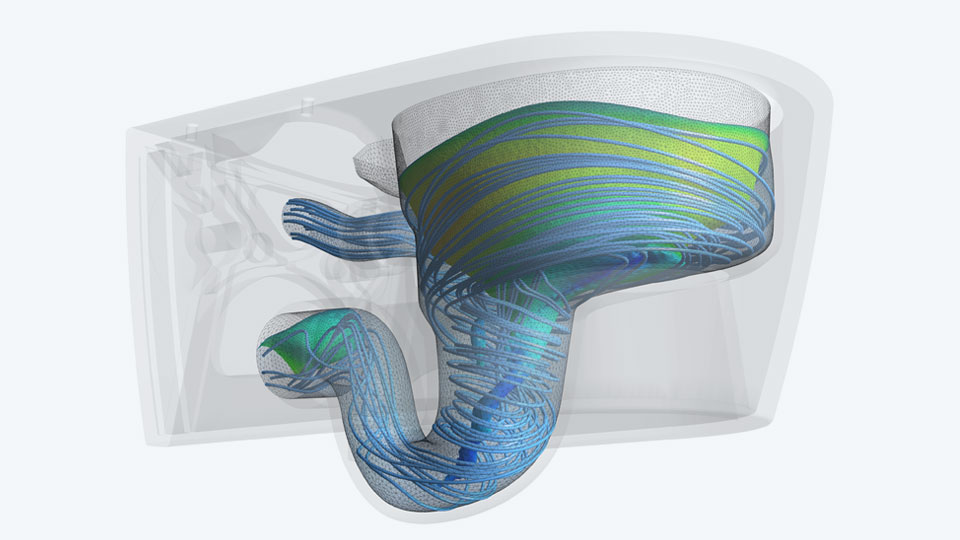

Geberit International AG
Rolf Weiss
rolf.weiss2@geberit.com
www.geberit.com
Author: Gerhard Friederici (CADFEM GmbH)
© Images: Geberit International AG
Contact CADFEM





